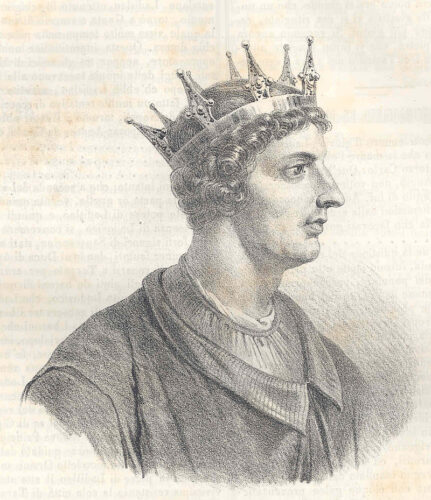Early Adulthood
A new player introduced by Pope Urban IV after the Battle of Montaperti in the Italian chess-board would prove to be a game-changer. Charles of Anjou youngest son of Louis VIII of France, rich and ambitious by nature was seen by the papacy as the man who could restore its primacy by taking down the powerful Ghibelline King of Sicily.
The Battle of Benevento in 1266 made Charles the strongest ruler in Italy and tipped the scale against the Ghibellines. Just 9 years after their triumph the Sienese would succumb to the joint forces of King Charles and Florence in the Battle of Colle Val d’Elsa despite the overwhelming numerical superiority of the former. Not bearing the humiliating defeat, Siena’s commander and Podestà Provenzano Salvani, threw himself into the midst of the enemy lines. His head was severed from his body, and hoisted on a spear, as a trophy, around the battlefield.


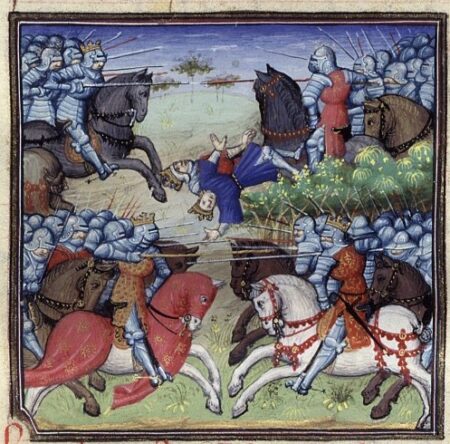
By 1270 Siena was the last Ghibelline stronghold still fighting against Charles. In the same time a papal excommunication by Pope Clement IV had already hurt the merchants and bankers of the city making it difficult for them to obtain repayments of their loans and bills, leading to a shift of allegiance for many of them. The siege of the summer of 1270 by the troops of Charles of Anjou, who was now the King of Naples, would have seemed as godsend even by many Sienese. By the end of August the city had surrendered and the Ghibelline government had been removed.
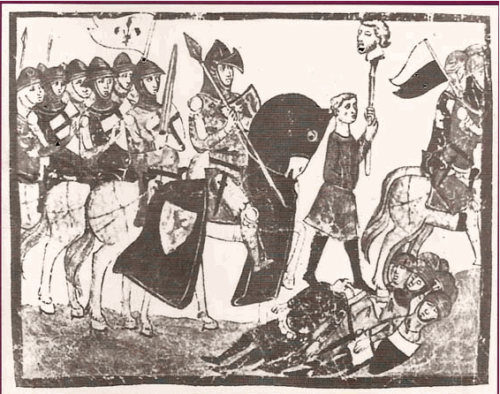

The new Guelph regime of Siena would be governed by a new council of 35 members which expressed the upcoming merchant class and excluded the old noble families associated with the Ghibelline past. Despite the delegation of its geopolitical role, the change did wonders for Siena’s economy which entered a period of substantial growth evident by the great architectural landmarks such as the Piazza del Campo and the Palazzo Publico and of course the ongoing works in the Duomo that were materialized towards the end of the 13th century.

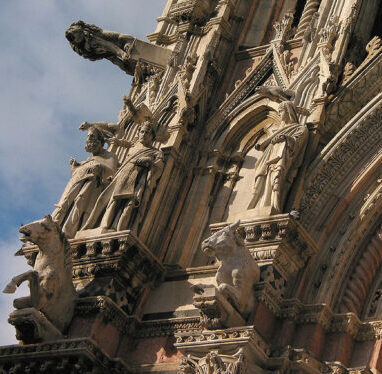
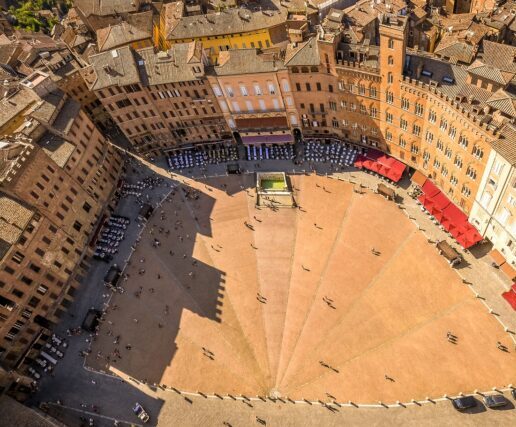
Art followed suit. Painters like Maestro di Tressa, Duccio di Buoninsegna and Simone Martini inaugurated with their works the so called Scuola senese, the Sienese school of art that would offer great masterpieces between 13th and 16th century. Their canvases were to a great extent themed with ecclesiastical stories in a manner clearly influenced by the Byzantines.
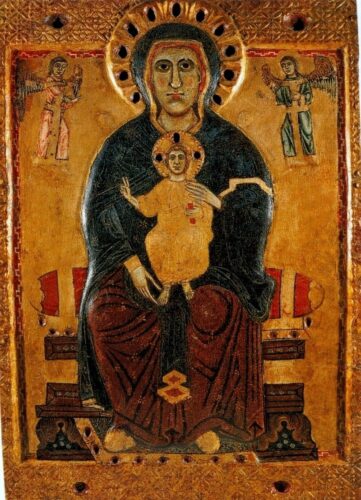

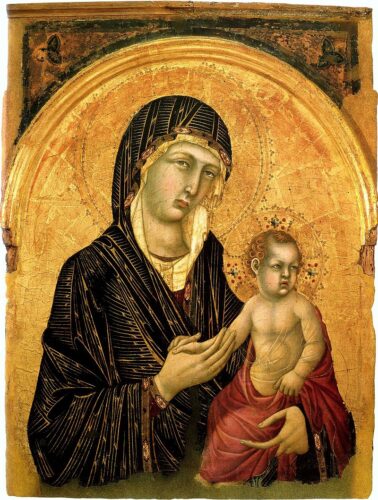
The establishment of the Guelph Government of the Nine that came to power in 1286 cemented the peace with Florence and propelled a period of prosperity that had never been experienced before. The Palazzo dei Signori (Palazzo Publico) became the seat of the government by 1310 and by 1327 it had taken its final form.
Piazza del Campo was paved with bricks and was divided into nine equal parts, a clear reference to the governing body. The Baptistery of San Giovanni in the Duomo and the Palazzo del Capitano del Popolo were erected. The Campanile, Duomo’s Bell Tower was completed in 1313 and so was the Torre del Mangia, the 112 meter tower of the town hall, in 1348.
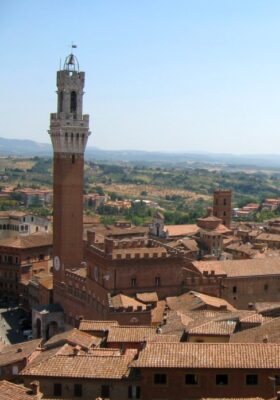
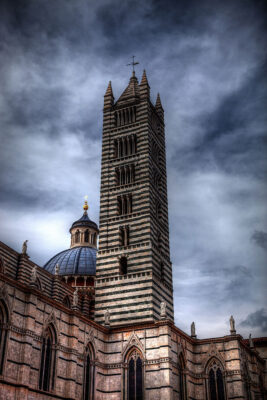
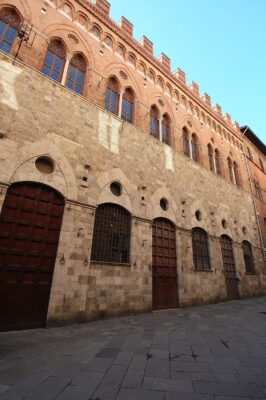

In the year of the completion of Torre del Mangia (1348) the city’s population had peaked reaching 70.000 inhabitants (Florence numbered 110.000 to 120.000). That same year the Great Plague hit Siena with such ferocity that almost half of its population perished in a matter of months, causing havoc and financial collapse . Giovanni Tolomei, a Benedictine monk who had left his monastic solitude to devote himself to the care of the sick, also succumbed to the disease and is revered today by the Catholic Church as Saint Bernardo Tolomei.
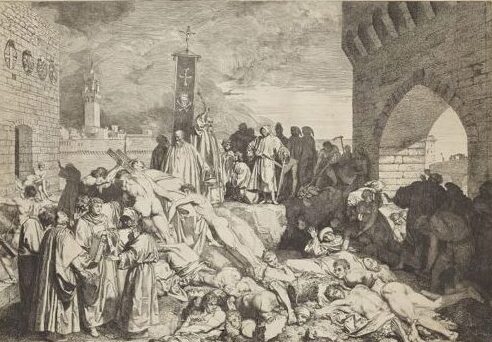
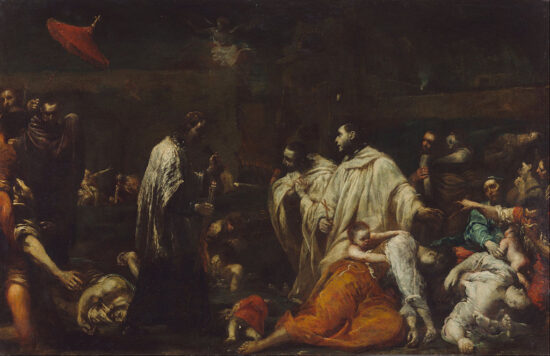
Although the government tried to cast out the demons with the construction of the marble Chapel Square (Cappella di Piazza) dedicated to the Virgin Mary at the foot of Torre del Mangia on the Piazza del Campo in 1352, the wave of despair was too great for the government to escape unscathed. After a period of violence and disorder and nearly seventy years in power the Governo dei Nove also known as the Noveschi fell in the midst of uncontrollable riots in 1355.
Constant changes in the forms of government, ongoing riots and conspiracies within the city gave rise to new external problems, with Montepulciano rebelling against Siena fired up by its permanent rival, the city of Florence. The descending spiral and the new tension with Florence forced the Sienese government to seek the protection of Gian Galeazzo Visconti, the first Duke of Milan who had already gained control of Verona, Vicenza and Padua and aimed in the revival of a united kingdom in Northern Italy. He was proclaimed Lord of Siena in 1399.



In 1402 Galeazzo died of fever and three years later Siena ended the union with the House of Visconti. The biggest danger for Siena was not Florence for once but King Ladislaus of Naples who had already conquered Rome and started to move against Tuscany and Northern Italy. The two rival cities of Tuscany set aside their year-long feud before the common enemy and fought side by side against Ladislaus’ coalition, wining back Rome in 1410 and securing peace shortly after that.

